Is David Ortiz a Hall of Famer? Crunching the Facts and Figures
Evaluating David Ortiz for the Hall of Fame is a challenge: His quantitative and qualitative record is excellent but it is not superlative, which puts him on the bubble. The question then becomes, which bubble?Two players have been elected to the Hall of Fame who had played a substantial amount of their career as the designated hitter, Paul Molitor (elected in 2004) and Frank Thomas (elected in 2014), and although both have come to be identified as designated hitters, both did log substantial time in the field—in fact, Molitor played more games as a fielder (primarily in the infield) than as a DH. Edgar Martinez is known as a designated hitter, but he did play more than 500 games at third base; however, he has not been elected to the Hall of Fame in six tries already, although whether that is prejudice against the position, a ballot logjam that is sapping votes from several players, or a combination of the two is not clear.
By contrast, though, David Ortiz has been overwhelmingly a DH throughout his career, with his only sojourns in the field at first base. That means that he has contributed almost nothing defensively to his teams, and as he has stolen only 15 bases in his career (although he has been caught stealing only eight times), his contribution has been almost exclusively through his hitting. And as the perception, whether accurate or unfair, is that since the DH's only function is to hit for the pitcher, the DH should have a substantially better hitting record than at least many of the position players.
David Ortiz is currently the lifetime leader among designated hitters in several categories including games played, plate appearances, at-bats, hits, home runs, and runs batted in. The following table presents career RBI and other hitting totals by players who have logged significant amounts of time as designated hitters and have proved to be successful at the position. Note that these totals reflect performance as the designated hitter only.
This table is ranked by the players' total runs batted in as a designated hitter. Granted, RBI is a statistic that has been traditionally overvalued, but I have chosen it as the ranking criterion because the DH has generally been looked up as the "big bat," the "run producer" in the lineup, and it is the most appropriate of the counting statistics to evaluate these players. (We look at players' qualitative worth below.)
| Designated Hitter Career Totals, DH Only, Ranked by DH RBI |
||||||
| Player |
G |
PA |
H |
HR |
RBI |
Slash Line |
| David Ortiz |
1753 |
7672 |
1891 |
415 |
1344 |
.288/.383/.556 |
| Edgar Martinez |
1403 |
6218 |
1607 |
243 |
1003 |
.314/.428/.532 |
| Harold Baines |
1643 |
6618 |
1690 |
236 |
981 |
.291/.370/.467 |
| (A) Frank Thomas |
1310 |
5698 |
1288 |
269 |
881 |
.275/.394/.505 |
| Hal McRae |
1426 |
5917 |
1555 |
145 |
823 |
.294/.357/.463 |
| Don Baylor |
1284 |
5391 |
1210 |
219 |
803 |
.259/.344/.449 |
| Chili Davis |
1160 |
4899 |
1175 |
200 |
736 |
.282/.382/.483 |
| Travis Hafner |
1043 |
4442 |
1036 |
200 |
689 |
.275/.378/.504 |
| (A) Paul Molitor |
1171 |
5334 |
1456 |
102 |
653 |
.308/.374/.454 |
| Jose Canseco |
846 |
3730 |
853 |
208 |
641 |
.265/.355/.510 |
G: Games played at the designated hitter position only.
PA: Plate appearances at the designated hitter position only.
H: Hits at the designated hitter position only.
HR: Home runs at the designated hitter position only.
RBI: Runs batted in at the designated hitter position only.
Slash Line: Grouping of the player's career batting average, on-base percentage, and slugging percentage at the designated hitter position only.
The following table lists those ten players, including Ortiz, with their career totals for each category, including both the DH position and all other positions played.
| Designated Hitter Career Totals, All Positions, Ranked by Total RBI |
||||||
| |
G/DH |
G/OP |
H |
HR |
RBI |
Slash Line |
| (A) Frank Thomas |
1310 |
969 |
2468 |
521 |
1704 |
.301/.419/.555 |
| Harold Baines |
1643 |
1056 |
2866 |
384 |
1628 |
.289/.356/.465 |
| David Ortiz |
1753 |
263 |
2159 |
466 |
1533 |
.285/.379/.547 |
| Jose Canseco |
846 |
1019 |
1877 |
462 |
1407 |
.266/.353/.515 |
| Chili Davis |
1160 |
1220 |
2380 |
350 |
1372 |
.274/.360/.451 |
| (A) Paul Molitor |
1171 |
1489 |
3319 |
234 |
1307 |
.306/.369/.448 |
| Don Baylor |
1284 |
973 |
2135 |
338 |
1276 |
.260/.342/.436 |
| Edgar Martinez |
1403 |
580 |
2247 |
309 |
1261 |
.312/.418/.515 |
| Hal McRae |
1426 |
508 |
2091 |
191 |
1097 |
.290/.351/.454 |
| Travis Hafner |
1043 |
72 |
1107 |
213 |
731 |
.273/.376/.498 |
G/DH: Games played as the designated hitter.
G/OP: Games played at positions other than designated hitter.
H: Hits at all positions (total career values).
HR: Home runs at all positions (total career values).
RBI: Runs batted in at all positions (total career values).
Slash Line: Grouping of the player's career batting average, on-base percentage, and slugging percentage at all positions (total career values).
The following table examines the ten players qualitatively, including bWAR, by which this table is ranked.
| Designated Hitter Career Totals, Qualitative Statistics for Entire Career (All Positions), Ranked by bWAR |
|||||||
| |
bWAR |
fWAR |
wOBA |
wRC+ |
OPS+ |
HoFM |
HoFS |
| (A) Paul Molitor |
75.4 |
67.6 |
.361 |
122 |
122 |
166 |
59 |
| (A) Frank Thomas |
73.7 |
72.0 |
.416 |
154 |
156 |
194 |
60 |
| Edgar Martinez |
68.3 |
65.5 |
.405 |
147 |
147 |
132 |
50 |
| |
|||||||
| David Ortiz |
47.7 |
43.4 |
.391 |
138 |
139 |
138 |
47 |
| Jose Canseco |
42.3 |
42.1 |
.375 |
130 |
132 |
103 |
39 |
| Harold Baines |
38.5 |
38.4 |
.358 |
119 |
121 |
66 |
44 |
| Chili Davis |
38.1 |
37.9 |
.354 |
118 |
121 |
30 |
39 |
| Hal McRae |
27.9 |
28.7 |
.358 |
122 |
123 |
49 |
24 |
| Don Baylor |
28.3 |
29.4 |
.347 |
118 |
118 |
44 |
30 |
| Travis Hafner |
24.8 |
21.9 |
.374 |
132 |
134 |
30 |
19 |
bWAR: Career Wins Above Replacement as calculated by Baseball Reference.
fWAR: Career Wins Above Replacement as calculated by FanGraphs.
wOBA: Weighted on-base average as calculated by FanGraphs. Weighs singles, extra-base hits, walks, and hits by pitch; generally, .400 is excellent and .320 is league-average.
wRC+: Career weighted Runs Created, league- and park-adjusted, as calculated by FanGraphs. Positively indexed to 100, with a 100 wRC+ indicating a league-average player, and values above 100 indicating the degrees better a player is than a league-average player.
OPS+: Career on-base percentage plus slugging percentage, league- and park-adjusted, as calculated by Baseball Reference. Positively indexed to 100, with a 100 OPS+ indicating a league-average player, and values above 100 indicating the degrees better a player is than a league-average player.
HoFM: Hall of Fame Monitor: An index of how likely a player is to be inducted to the Hall of Fame based on his entire playing record (offensive, defensive, awards, position played, postseason success), with an index score of 100 being a good possibility and 130 a "virtual cinch." Developed by Baseball Reference from a creation by Bill James.
HoFS: Hall of Fame Standards: An index of performance standards, indexed to 50 as being the score for an average Hall of Famer. Developed by Baseball Reference from a creation by Bill James.
The tiering in the previous table is dramatic: Molitor, Thomas, and Martinez are all within the top 75 of position players in all-time bWAR, with Molitor and Thomas both first-ballot Hall of Famers while many observers (including this writer) maintain that Martinez is Hall of Fame-caliber. Ortiz, 20 wins behind Martinez, is currently ranked 203rd in bWAR, and it is unlikely that he will add more than five wins to his total before he retires—and that only if he has another season similar to his 2013 effort.
Given that Ortiz has largely written his legacy, let's compare him to Hall of Fame position players who are somewhat similar to him. Keep in mind that we are currently in the process of assessing the designated hitter position for legacy. Both Molitor and Thomas are in the Hall, but as we have seen, both clocked substantial time in the field, and even Edgar Martinez, generally regarded to be a DH, put in his time at third base. But considering that Martinez is not yet in the Hall of Fame—a point that could have a bearing on Ortiz's legacy—there are no players in the Hall who are directly comparable to Ortiz.
So, the following table lists players already in the Hall of Fame (all but two elected by the BBWAA) who are roughly comparable to David Ortiz in bWAR (10 wins higher or lower than Ortiz's current [2014] value), in position (first basemen or outfielders only), and whose career occurred primarily after integrated baseball began in 1947.
| Hall of Fame Players with Comparable bWAR to David Ortiz, Ranked by bWAR |
|||||||
| |
bWAR |
fWAR |
wOBA |
wRC+ |
OPS+ |
HoFM |
HoFS |
| Willie Stargell |
57.5 |
62.9 |
.387 |
145 |
147 |
106 |
44 |
| Tony Perez |
53.9 |
58.9 |
.356 |
121 |
122 |
81 |
41 |
| Kirby Puckett |
50.9 |
44.9 |
.366 |
122 |
124 |
160 |
39 |
| (B) Orlando Cepeda |
50.2 |
50.3 |
.370 |
131 |
133 |
126 |
37 |
| (B) Larry Doby |
49.5 |
51.1 |
.396 |
137 |
136 |
72 |
30 |
| Ralph Kiner |
49.3 |
47.6 |
.427 |
147 |
149 |
136 |
34 |
| David Ortiz |
47.7 |
43.4 |
.391 |
138 |
139 |
138 |
47 |
| Jim Rice |
47.4 |
50.8 |
.375 |
128 |
128 |
146 |
43 |
| Lou Brock |
45.2 |
43.2 |
.336 |
109 |
109 |
152 |
43 |
The following table lists those Hall of Fame players along with David Ortiz ranked by their career RBI totals.
| Hall of Fame Players with Comparable bWAR to David Ortiz, Ranked by RBI |
|||||||
| Player |
G |
PA |
H |
HR |
R |
RBI |
Slash Line |
| Tony Perez |
2777 |
10861 |
2732 |
379 |
1272 |
1652 |
.279/.341/.463 |
| Willie Stargell |
2360 |
9027 |
2232 |
475 |
1194 |
1540 |
.282/.360/.529 |
| David Ortiz |
2111 |
8851 |
2159 |
466 |
1267 |
1533 |
.285/.379/.547 |
| Jim Rice |
2089 |
9058 |
2452 |
382 |
1249 |
1451 |
.298/.352/.502 |
| Orlando Cepeda (A) |
2124 |
8698 |
2351 |
379 |
1131 |
1365 |
.297/.350/.499 |
| Kirby Puckett |
1783 |
7831 |
2304 |
207 |
1071 |
1085 |
.318/.360/.477 |
| Ralph Kiner |
1472 |
6256 |
1451 |
369 |
971 |
1015 |
.279/.398/.548 |
| Larry Doby (A) |
1533 |
6299 |
1515 |
253 |
960 |
970 |
.283/.386/.490 |
| Lou Brock |
2616 |
11240 |
3023 |
149 |
1610 |
900 |
.293/.343/.410 |
Again, RBI is an imperfect statistic but it is serving as a measure of the "run producer." Besides, our sample of players is hardly perfect. Both Ralph Kiner and Kirby Puckett were forced to quit baseball prematurely because of physical ailments. Kiner's dominance as a power hitter—he led the National League in home runs for the first seven years of his career—was enough to get him into the Hall of Fame, although just barely: He received one vote over the minimum in his final year of eligibility. Puckett's hit total, high batting average, and World Series heroics helped to bolster a relatively short career, and it may offer a comparable model for Ortiz—although Puckett had defensive value as a center fielder, a dimension Ortiz lacks.
Larry Doby was an excellent, although not elite, player, but Doby was the first player to integrate the American League two months after Jackie Robinson debuted. However, Doby saw limited action in 1947 and did not become full-time until the following year, and despite a fine career he has always languished in Robinson's shadow. His induction into the Hall, by the Veterans Committee, goes beyond the playing field.
When Lou Brock retired, he was the all-time leader in stolen bases, and his joining the 3000-hit club helped to ensure that he was a first-ballot Hall of Famer. Tony Perez piled up a lot of RBI as one of the key components of Cincinnati's Big Red Machine, and it is hard not to think that his election by the writers, on his ninth ballot, was acknowledgement of his contributions alongside teammates Johnny Bench and Joe Morgan more so than for his excellent if not elite record. Orlando Cepeda is another excellent if not elite first baseman who missed the Hall of Fame by 1.5 percent of the vote in his fifteenth and final year, but he was elected by the Veterans Committee in 1999.
Meanwhile, Jim Rice must have picked up Cepeda's 1.5 percent ten years later because Rice squeaked in on his fifteenth and final try in 2009 with 76.4 percent of the writers' vote. Rice's bWAR is near-identical to Ortiz's current value, although FanGraphs is more bullish on Rice and less so on Ortiz, while Rice's other qualitative statistics are just below Ortiz's, and considering that Rice has been regarded by many analysts as a gratuitous Hall of Fame pick (I do not think he makes it past the threshold), that may have an impact on Ortiz.
However, the player in our sample who may be the closest match to David Ortiz is Willie Stargell. Stargell was a feared slugger and top run-producer in his prime. Ortiz is likely to pass Stargell on the career home run and RBI list this season, and probably the career hit list as well.
But Stargell's postseason heroics are just as legendary as Ortiz's, at least they were in 1979. Already in his age-39 season in 1979 and known affectionately as "Pops" in the Pittsburgh Pirates clubhouse, Stargell spurred the Bucs to the postseason with an MVP-winning regular season (he shared the award with Keith Hernandez) that, while excellent (.281/.352/.552, 139 OPS+, 32 home runs, 82 RBI), was based as much on his inspiration as his on-field performance. Stargell simply exploded in the postseason, though, unleashing a .455/.571/1.182 slash line with two doubles, two home runs, and six runs driven in as the Pirates swept the Cincinnati Reds in three games of the then-five game National League Championship Series. (There were no Divisional Series in 1979.)
However, the Pirates' World Series opponents, the Baltimore Orioles, were not going to roll over—far from it. Each team won one of the first two games, but then the Orioles won the next two games, taking a 3–1 lead into Game Five and pushing the Bucs to the brink of elimination. The Pirates, though, rallying behind Stargell, won that game, and then Game Six to set up a Game Seven in Baltimore's Memorial Stadium. The O's grabbed a one-run lead with a Rich Dauer leadoff home run in the bottom of the third inning as pitcher Scott McGregor held the Pirates scoreless. Then, with one out and Bill Robinson aboard with a single in the top of the sixth, Stargell crushed a McGregor offering over the right-field fence to give the Pirates the lead, a lead they held, adding a pair of insurance runs in the ninth inning, until they recorded the final out and became World Champions.
In addition to being a co-winner of the MVP award in 1979, Stargell was named the MVP of both the NL Championship Series and the World Series, hitting again at a torrid clip: .400/.375/.833 (that is not a misprint of the on-base percentage—Stargell hit two sacrifice flies), four doubles and three home runs, seven runs scored and seven runs batted in. It is the only time the same player has won all three MVP trophies in a single year.
Is David Ortiz a Hall of Famer? The Verdict
Here is where David Ortiz seems to fall with respect to the Hall of Fame: somewhere between Willie Stargell and Jim Rice. Both of those Hall of Fame players are on the bubble, with Stargell much closer to the threshold than Rice by dint of his 57.5 bWAR as compared to Rice's 47.4 bWAR, which is just a tick behind Ortiz's 47.7. (And while FanGraphs is more bullish on both Stargell, with a 62.9 fWAR, and Rice, with a 50.8 fWAR, it dings Ortiz a few wins of value: 43.4 fWAR.)Analyst Jay Jaffe's JAWS (Jaffe WAR Score system), which uses bWAR to evaluate players' qualifications for the Hall of Fame, lists Stargell as the 15th-best left fielder in MLB history, his JAWS measurements below the average of all left fielders in the Hall, while Rice is listed 26th. Ortiz is listed as the 32nd-best first baseman, behind Tony Perez (26th) and Orlando Cepeda (30th), but Ortiz's ranking is almost meaningless because Jaffe's system does not evaluate designated hitters as a position, and Ortiz barely qualifies as a first baseman in terms of playing time at the position, let alone for a qualitative assessment.
In his prime, Rice earned the reputation of being one of the league's most feared hitters—or was that a public relations campaign?—and he certainly has the record to lend credence to that claim. He was the runner-up in American League Rookie of the Year voting in 1975, finishing behind teammate Fred Lynn, who had a legendary rookie campaign, becoming the first player to capture the Rookie of the Year and MVP awards in the same year. (Ichiro Suzuki in 2001 is the only other player to accomplish this feat.)
Rice won the AL MVP in 1978 when he led the league in nine batting categories (eleven retrospectively, as OPS and OPS+ were not officially recognized statistics in 1978) including hits (213), triples (15), home runs (46), runs batted in (139), and total bases (406). No hitter before or since has ever led his league in triples, home runs, and RBI in the same season, while Rice was the first AL hitter to total 400 or more bases since Joe DiMaggio bagged 418 in 1937, and only Hank Aaron managed the feat, with an even 400 in 1959, between DiMaggio and Rice.
Rice finished in the top five for MVP voting five more times as he led the AL in total bases three more times, in home runs twice more, and in RBI and slugging percentage once more each. For a 12-year period, from 1975 to 1986, Rice delivered a .304/.356/.520 slash line while averaging, per season, 179 hits including 27 doubles, 6 triples, and 29 home runs, while scoring 92 runs and knocking in 106; his OPS+ during that time was 133, and he generated a 3.9 bWAR average per season for that 12-year period. But by his age-34 season in 1987, Rice's OPS+ had dropped to 101—he was now a league average hitter, and after two more mediocre years, Jim Rice retired after playing in only 56 games in 1989.
Jim Rice was an outstanding hitter, and campaigns such as his 1978 season fostered the perception that he was a Hall of Fame-caliber player. But once you start to ask questions from the Keltner List—" Was he the best player on his team?," "Are most players who have comparable career statistics in the Hall of Fame?," "Is he the best player at his position who is eligible for the Hall of Fame but not in?," and so on—you have to question Rice's bona fides for the Hall. (By the way, the Keltner List is yet another invention of Bill James's.) Certainly, Rice's ordeal to get into the Hall of Fame lasted until the very last minute, and even retrospective analyses, such Wins Above Replacement assessment (either Baseball Reference or FanGraphs), don't position Rice as one of the best left fielders in baseball history, only as one of the very good ones.
David Ortiz's career trajectory looks much different—it's a roller-coaster ride as he struggled in the Twins organization, enjoyed an auspicious spike in his first five years with the Red Sox, then slid into a trough in his mid-30s before cresting for three seasons, or perhaps that is four, if his 35 home runs and 104 RBI in 2014 are any indication.
The following table illustrates Ortiz's top 100 career rankings in various quantitative offensive categories through the 2014 season.
| Quantitative Category |
Value |
Ranking |
| Doubles |
547 |
28 |
| Extra-base Hits |
1031 |
29 |
| Home Runs |
466 |
33 |
| Strikeouts |
1569 |
41 |
| Runs Batted In |
1533 |
47 |
| Bases on Balls |
1162 |
65 |
| Total Bases |
4140 |
76 |
The following table illustrates Ortiz's top 100 career rankings in various qualitative offensive categories through the 2014 season.
| Qualitative Category |
Value |
Ranking |
| Slugging Percentage |
.547 |
27 |
| At-bats per Home Run |
16.26 |
34 |
| On-base plus Slugging (OPS) |
.926 |
42 |
| Runs Created (Baseball Reference) |
1598 |
67 |
| Adjusted OPS (OPS+) |
139 |
80 |
| Weighted Runs Created (wRC+) |
138 |
85 |
Ortiz is clearly one of the best sluggers in baseball history: He is within the top 50 in power-hitting counting numbers (doubles, home runs, extra-base hits) and in runs batted in, and he is sure to climb higher on those lists if he continues to stay healthy and produce. Ortiz is also in the top 50 in power-hitting qualitative evaluations (slugging percentage, at-bats per home run, OPS).

Ortiz celebrating in 2009. (Photo "Ortizpoint" courtesy of Toasterb at the English language Wikipedia project.)
If a designated hitter is supposed to hit with power and drive in runs, as has been the popular perception since the position was introduced in 1973, then David Ortiz looks stronger than Edgar Martinez even though Martinez presumably has greater value in helping his team win games, as measured by WAR. Yet Ortiz has posted a number of excellent regular seasons and has distinguished himself in the postseason on more than one occasion, helping to lead the Boston Red Sox to three World Series championships since he came to the team in 2003. On performance alone, and although Wins Above Replacement doesn't reflect it, David Ortiz is one of the best designated hitters ever to play the game, and for that he has earned his spot in the Hall of Fame.
Of course, this leaves aside the bias against the designated hitter, as well as any allegations that Ortiz used performance-enhancing drugs, which was the primary focus of Ortiz's post on The Players' Tribune website. But who knows? When David Ortiz finally becomes eligible for Hall of Fame consideration, these obstacles may have been removed by then, with Edgar Martinez having been elected to the Hall already and thus setting the precedent for designated hitters.
But I wouldn't bet on it.


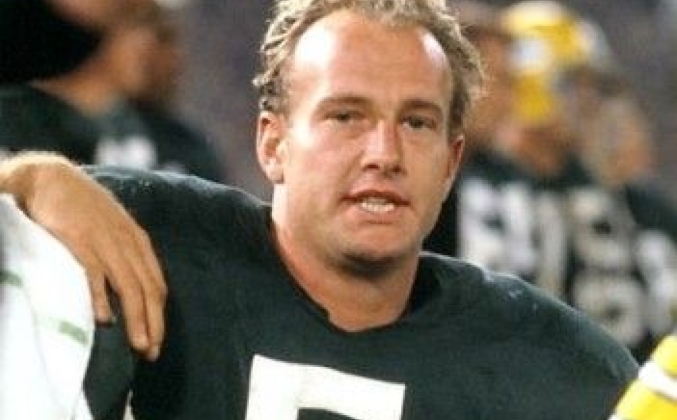



















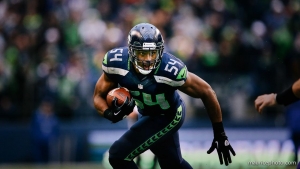



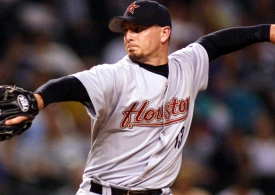
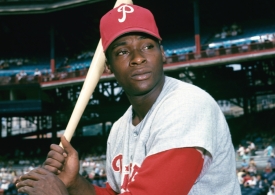



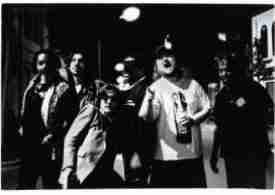

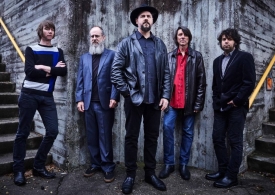

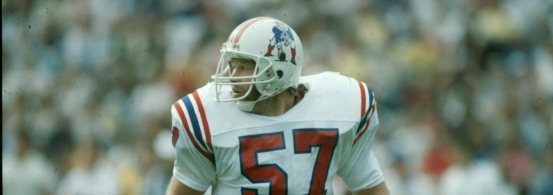
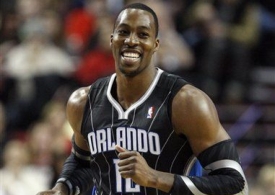

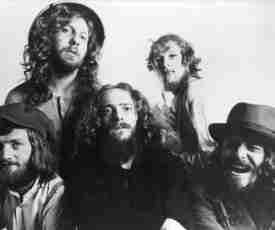

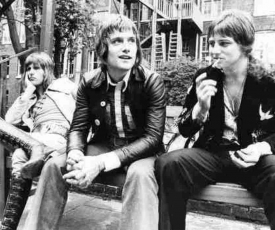

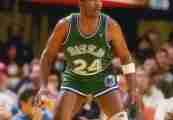
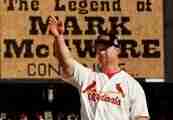

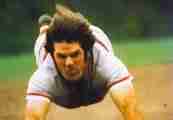
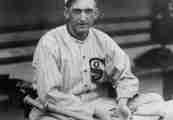
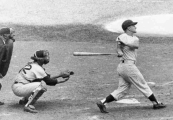
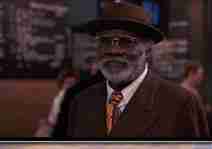
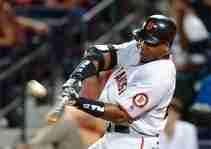
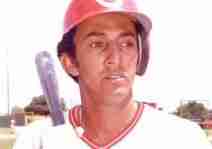

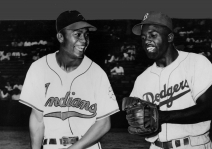
Comments powered by CComment